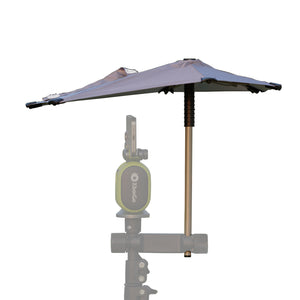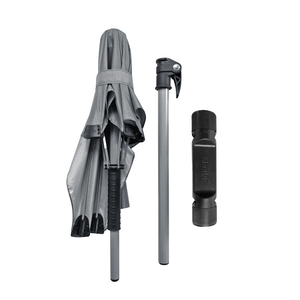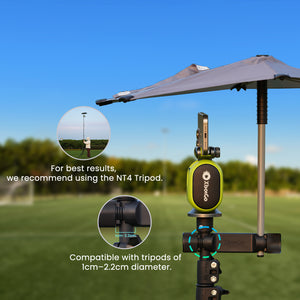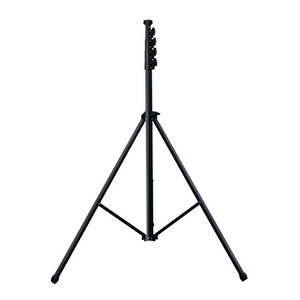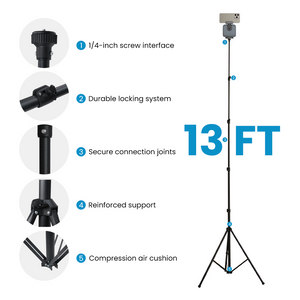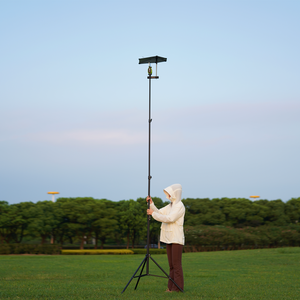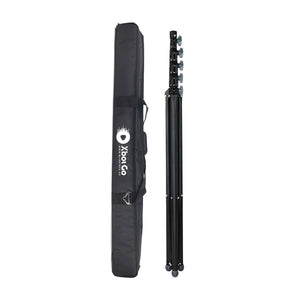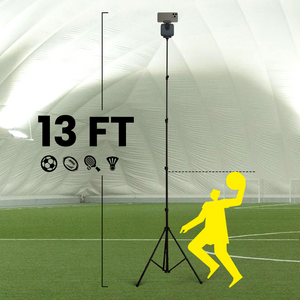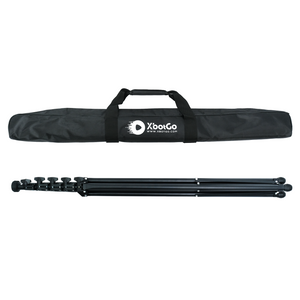XbotGo Chameleon AI Sports Camera
How Hockey Points Work: Complete Guide for New Fans & Parents
You're watching your kid's first hockey game, cheering every time they touch the puck. The scoreboard shows your team won 4-2, but then you overhear another parent saying their child "got three points tonight." Wait—how does one player get three points when the team only scored four goals?
Welcome to one of hockey's most common sources of confusion: the dual points system. Whether you're a new fan, a parent trying to understand your child's stats, or even a seasoned viewer looking to grasp advanced concepts, this guide will clarify everything about how points work in hockey.
The Two Types of Hockey Points
Here's the fundamental truth that trips up newcomers: hockey uses "points" to measure two completely different things. Once you understand this distinction, everything else falls into place.
Player Points: Goals and Assists
In the player statistics world, points measure individual offensive contribution. The formula is beautifully simple:
Player Points = Goals + Assists
Every time a player scores a goal, they earn one point in their personal statistics. Every time they assist on a goal, they also earn one point. That's it. If a player scores 25 goals and adds 40 assists over a season, they have 65 points.
Here's where it gets interesting: up to three players can earn points on a single goal. Let's say Player A passes to Player B, who passes to Player C, who scores. In this scenario:
- Player C gets 1 point (goal)
- Player B gets 1 point (primary assist)
- Player A gets 1 point (secondary assist)
This system recognizes that hockey goals rarely happen in isolation—they're usually the product of teamwork and smart passing plays.
Team Points: Standings and Playoffs
Team points operate on an entirely different scale and determine playoff positioning. In the NHL, the system works like this:
- Win (any kind): 2 points
- Overtime/Shootout loss: 1 point
- Regulation loss: 0 points
So when the Vegas Golden Knights beat the Seattle Kraken 4-3 in overtime, Vegas gets 2 points in the standings while Seattle gets 1 point for pushing the game beyond regulation time.
Common Confusion Resolved
The confusion typically arises because we use the same word—"points"—for both systems. A team can win 3-2 (scoring 3 goals) while earning 2 points in the standings. Meanwhile, a player might have "4 points" in that same game by scoring once and assisting on all other goals.
Think of it this way: player points track offensive production, while team points track wins and losses for playoff positioning. They're measured on completely different scales for completely different purposes.
How Player Points Really Work
Let's dive deeper into the player points system, starting with the two components that matter most to forwards, defensemen, and anyone tracking individual performance.
Goals: The Primary Currency
The goal-scoring rule follows hockey's "last touch" principle: whoever on the attacking team last touches the puck before it completely crosses the goal line gets credited with the goal. This creates some interesting scenarios:
- Direct shots: Player shoots, puck goes in = player's goal
- Deflections off teammates: If your shot deflects off a teammate's stick or body, they get the goal
- Deflections off opponents: If your shot goes off an opponent, you still get the goal
- Own goals: If a defender accidentally puts it in their own net, the last offensive player to touch it gets credit
This last-touch rule has strategic implications. Teams often position players in front of the net specifically to deflect shots, making it harder for goalies to track the puck's trajectory. It's why you'll see players battling for position in the "dirty areas" near the crease.
Season Benchmarks for Goal Scoring:
- 50+ goals: Elite level, only 1-2 players per season achieve this
- 40+ goals: Excellent season, handful of players reach this mark
- 30+ goals: Very good for primary scorers
- 20+ goals: Solid contributor for forwards
- 15+ goals: Excellent for defensemen
- 10+ goals: Good for defensive defensemen
Assists: The Teamwork Factor
Assists recognize the setup work that leads to goals. The NHL awards up to two assists per goal:
Primary Assist: The last pass before the goal. This player directly set up the scorer.
Secondary Assist: The pass before the primary assist. This recognizes the player who started the scoring sequence.
Consider this real-game example: Connor McDavid carries the puck into the offensive zone and passes to Leon Draisaitl. Draisaitl quickly feeds Zach Hyman, who scores. The points breakdown:
- Hyman: 1 point (goal)
- Draisaitl: 1 point (primary assist)
- McDavid: 1 point (secondary assist)
Assists carry equal weight to goals in the points total, which highlights hockey's team-oriented nature. Some players, particularly playmaking centers and offensive defensemen, build their careers on setting up teammates rather than scoring themselves.
Points Benchmarks by Position
Forwards:
- 100+ points: Truly elite season (think McDavid, MacKinnon)
- 80-90 points: Excellent, All-Star caliber
- 60-70 points: Very good top-line player
- 40-50 points: Solid middle-six forward
- 20-30 points: Defensive specialist or fourth-liner
Defensemen:
- 70+ points: Elite offensive defenseman (rare)
- 50-60 points: Excellent offensive contributor
- 40 points: Very good offensive defenseman
- 20-30 points: Solid two-way defender
- 10-20 points: Defensive specialist
For context, Wayne Gretzky holds the all-time records with 894 career goals and 1,963 career assists for 2,857 total points. To put that in perspective, no other player has even reached 2,000 career points. Among active players, only Sidney Crosby and Alex Ovechkin have surpassed 1,500 career points.
Team Points and Standings Explained
Now let's shift focus to how teams earn points in the standings—the system that actually determines who makes the playoffs.
The Current NHL System
The NHL's 2-1-0 points system might seem odd at first glance, but there's logic behind it:
Why 2 Points for a Win?
This has been the standard since the league's early days. Two points create enough separation between winning and losing to make every game meaningful while keeping the math relatively simple for standings.
Why 1 Point for Overtime/Shootout Losses?
Here's where it gets interesting. Teams that push a game to overtime have essentially "earned" a tie through 60 minutes of regulation play. The bonus point recognizes this achievement while still rewarding the eventual winner with a full 2 points.
The Mathematics of Competition:
This system creates an unusual quirk: regulation games distribute 2 total points (2-0), while overtime games distribute 3 total points (2-1). Some games are literally worth more than others in the standings.
Historical Evolution
Understanding the current system requires a trip through hockey history:
Pre-1999: Games could end in ties after a 5-minute overtime period. Both teams received 1 point for a tie.
1999-2004: The NHL introduced the "loser point" for overtime losses to encourage aggressive overtime play. Teams were playing too conservatively, protecting their guaranteed tie point.
2005-Present: The shootout was added to eliminate ties completely. The points system remained the same: 2 for any win, 1 for OT/SO loss, 0 for regulation loss.
This evolution reflects North American sports' general distaste for ties and the NHL's desire to create more exciting overtime periods. By guaranteeing both teams at least one point for reaching overtime, teams theoretically play more aggressively to secure the second point.
Tiebreaker Rules
When teams finish with equal points, the NHL uses these tiebreakers in order:
- Fewer games played (during the season only)
- Regulation wins (excluding OT/SO wins)
- Total wins (including OT/SO)
- Points earned in head-to-head games
- Goal differential
- Goals scored
The emphasis on regulation wins in tiebreakers partially addresses criticism that some teams accumulate too many "loser points." A team with 95 points built on regulation wins ranks higher than a team with 95 points heavy on overtime losses.
Alternative Points Systems
The current NHL system faces regular criticism, leading to numerous proposed alternatives. Understanding these helps appreciate both the current system's quirks and potential improvements.
The 3-Point System Debate
The International Ice Hockey Federation (IIHF) and many European leagues use a 3-point system:
- Regulation win: 3 points
- OT/Shootout win: 2 points
- OT/Shootout loss: 1 point
- Regulation loss: 0 points
Advantages:
- Every game worth the same total points (3)
- Rewards teams more for regulation victories
- Creates clearer standings separation
- Reduces incentive to play for overtime
Why Fans Support It:
Many hockey enthusiasts argue this system better reflects true team strength. Teams that consistently win in regulation deserve more credit than teams surviving to overtime. The math is cleaner, and standings better represent actual performance.
Why the NHL Resists:
- Historical record books would need context
- Point totals would inflate (120+ point seasons would become common)
- Late-season races might be decided earlier
- Current system keeps more teams "in the race" longer (good for revenue)
Advanced Proposals
Some analysts propose even more nuanced systems:
5-Point System:
- Regulation win: 5 points
- OT win: 4 points
- Shootout win: 3 points
- Shootout loss: 2 points
- OT loss: 1 point
- Regulation loss: 0 points
This maximizes differentiation between all possible outcomes, recognizing that winning in overtime (actual hockey) differs from winning in a shootout (skills competition).
Win Percentage System:
Simply rank teams by winning percentage, counting any win as 1.0 and any loss as 0.0. This eliminates points entirely but loses the nuance of close games extending beyond regulation.
Points in Action - Analysis and Strategy
Understanding points is one thing; seeing how they drive real hockey decisions is another. Let's explore how teams, coaches, and analysts use point systems in practice.
Reading Game Statistics
When evaluating player performance, raw point totals only tell part of the story. Consider these factors:
Points Per Game (PPG): A player with 60 points in 60 games (1.0 PPG) often contributes more than a player with 70 points in 82 games (0.85 PPG).
Even Strength vs. Power Play: Points scored during even strength (5-on-5) often indicate sustainable production. Power play points can inflate totals but depend on opportunity.
Shooting Percentage: A player scoring 40 goals on 10% shooting might maintain that pace. Someone scoring 40 on 25% shooting is likely due for regression.
Zone Starts: Players starting more shifts in the offensive zone naturally have more scoring opportunities.
Youth Hockey Applications
For young players and their parents, understanding points requires age-appropriate context:
Mite/U8 Level: Focus on fun and fundamentals, not point totals
Squirt/U10: Begin tracking goals and assists to understand teamwork
Peewee/U12: Point production starts indicating positional strengths
Bantam/U14: Statistical trends become more meaningful
Midget/U16-U18: Point totals factor into college/junior recruitment
Parent Guidance Tips:
- Celebrate assists as much as goals to reinforce teamwork
- Compare your child's progress to their own previous seasons, not teammates
- Understand that defensive players naturally score fewer points
- Focus on overall development, not statistical achievement
International and League Variations
Hockey's global nature means different leagues handle points differently. Understanding these variations provides perspective on the NHL system.
Different Systems Worldwide
European Leagues: Most use the 3-point system, creating more standings separation and rewarding regulation victories.
NCAA Hockey: Uses a unique hybrid where conference standings may differ from overall records. Some conferences award 3 points for wins and bonus points for goals scored.
Junior Hockey (CHL): Generally follows NHL format but some leagues experiment with 3-point systems or additional points for scoring multiple goals.
Olympic/World Championships: IIHF rules apply, using the 3-point system and different tiebreaker criteria focusing on head-to-head results.
Why Systems Matter
Points systems subtly influence how hockey is played:
Strategic Decisions: In the NHL's current system, teams often play conservatively late in tied games, knowing overtime guarantees a point. Under a 3-point system, teams might push harder for regulation wins.
Player Development: Young players in 3-point systems learn to value 60-minute efforts over surviving to overtime.
Fan Experience: Different systems create different late-season drama. The NHL's system keeps more teams mathematically alive longer, while 3-point systems might create clearer hierarchies.
Conclusion
Hockey's dual points systems—individual player points (goals plus assists) and team standings points (2-1-0 system)—initially confuse newcomers but reflect the sport's complexity. Player points celebrate both scoring and playmaking, while team points determine playoff positioning through a system evolved from tied games to overtime and shootouts.
Whether you're a parent decoding stat sheets, a new fan questioning standings, or a veteran debating system alternatives, remember that points are just one measure of hockey success. The next time you watch a game, notice how players make extra passes for assists and how teams manage situations when overtime looms. Understanding points is just the beginning of your hockey journey.
XbotGo Chameleon AI Sports Camera
Capture every moment with AI-powered tracking. Perfect for coaches, parents, and athletes who want seamless footage without manual filming.







 Soccer
Soccer Basketball
Basketball Ice Hockey
Ice Hockey Rugby
Rugby










